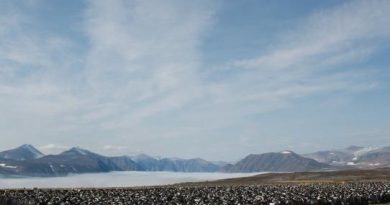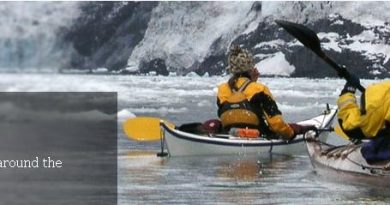'How do Inuit ( … )?' and other stupid questions
Wednesday, January 26, 2011
Qikiqtarjuaq, Nunavut
It’s probably safe to say that, over their lifetime, most Nunavummiut (people from Nunavut) have gotten that question from non-Inuit people more times than they can count.
They’ve gotten the question from scientists, from researchers, from government officials… and yes, probably even from their fair share of journalists too.
It’s no surprise that many Northerners are fatigued with the question. But what some people may not know is what a sense of humour many Nunavummiut have about getting asked it all the time.
This morning we were interviewing a local Inuk woman in her home. Her children and grandchildren were milling around and her friend Lucy was also visiting. We had just finished up filming in the living room and the soundman and cameraman had moved the equipment to an upstairs sitting room to set up.
I was standing in the stairwell and heard Lucy and our guest whispering and then break out into rollicking laughter. A moment later, they both came up the stairs.
“Can (Lucy) use the bathroom,” our guest said seriously.
The bathroom was right next to where we were filming next. Lucy didn’t want to make any noise that would find its way on camera. I told her to go ahead.
Then Lucy said something in Inuktitut that had the two women laughing hysterically again.
“What did she say?” I asked our guest.
“She wants to know why you’re not coming into the bathroom to film. I mean, don’t you want to document how Inuit pee?”
Our guest and Lucy burst out laughing again.
“Don’t mind us, we’re just joking around” said our guest, who also frequently works as an Inuktitut-English interpreter. “It’s just that every year there’s qallunaat (white people) coming North asking strange things.
“Strange things like what?,” I said.
Our guest put on her best serious academic voice: “Things like ‘How do Inuit do this? … How do Inuit do that?”
“You know… stupid questions.”



